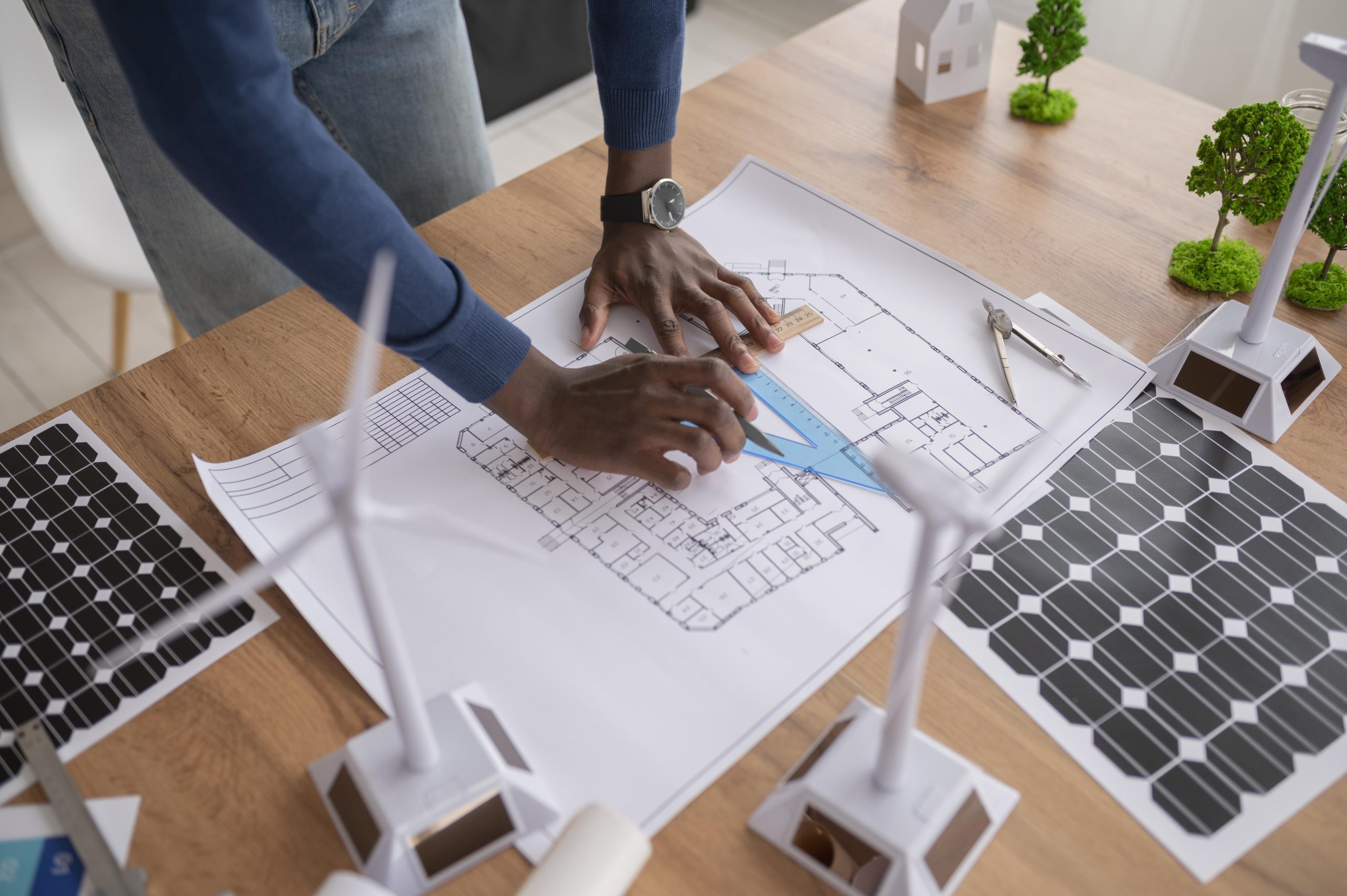Hospitality facilities like resorts and hotels contain various spaces such as guest rooms, swimming pools, lobby, central kitchen, restaurant, and

The integration of solar power systems into modern MEP (mechanical, electrical, and plumbing) design has become a cornerstone of sustainable building practices. As renewable energy adoption grows, architects, engineers, and builders are increasingly looking for ways to incorporate solar technologies seamlessly into MEP systems. This integration not only reduces the environmental footprint of buildings but also brings long-term economic benefits such as lower energy bills and enhanced property value.
InnoDez, a leading MEP engineering firm, is at the forefront of this evolution, delivering innovative solar-integrated MEP solutions for commercial, industrial, and residential projects. In this article, we explore the key considerations, benefits, challenges, and strategies for integrating solar power into modern MEP systems.
Solar power is a clean, renewable energy source that reduces greenhouse gas emissions. Integrating solar systems into MEP design aligns with global efforts to combat climate change and promote sustainable development.
Solar integration significantly lowers energy consumption from conventional sources. This leads to reduced dependence on fossil fuels and a substantial decrease in operational energy costs.
Governments worldwide offer incentives, tax credits, and rebates for buildings adopting solar energy. Modern building codes and green certifications such as LEED often mandate or encourage renewable energy integration.
Solar systems, when paired with battery storage, enhance resilience against grid failures and provide energy independence, a critical factor in areas with unreliable power supply.
To successfully incorporate solar power, the following elements must be seamlessly integrated into the MEP design:
Inverters convert DC electricity generated by solar panels into AC electricity used by most building systems.
Battery storage solutions ensure solar energy can be used during non-peak sunlight hours, improving energy efficiency and reliability.
Modern MEP designs include load-sharing mechanisms to prioritize solar energy usage while maintaining compatibility with the grid.
Advanced software enables real-time monitoring of solar energy generation, consumption, and storage, optimizing system performance.
InnoDez leverages cutting-edge technology to design MEP systems that integrate these components seamlessly, maximizing energy efficiency and operational reliability.
InnoDez excels at designing systems where solar power harmonizes with electrical, HVAC, and plumbing components, delivering high-performing, sustainable solutions.
Engage MEP engineers, architects, and solar specialists early in the project to ensure cohesive designs. Early collaboration reduces rework and enhances overall efficiency.
Use advanced design tools like Building Information Modeling (BIM) and energy simulation software to predict system performance, optimize placement, and prevent design conflicts.
Design solar systems that can be scaled or upgraded as energy needs evolve, ensuring long-term utility and flexibility.
Ensure solar panels and associated systems are accessible for maintenance to prevent performance degradation over time.
Combine solar power with other renewable sources like wind or geothermal energy for diversified energy supply and enhanced sustainability.
InnoDez employs these strategies to deliver integrated solutions that are efficient, scalable, and future-proof.
Buildings with integrated solar systems are more attractive to buyers and tenants, commanding higher property values.
Enhanced energy security during grid outages or peak demand periods.
Easier compliance with evolving building codes and access to government incentives.
InnoDez projects consistently demonstrate these benefits, showcasing the value of integrating solar power into MEP designs.
Solar panels will become integral components of building materials, such as windows, roofs, and façades.
Artificial intelligence (AI) and Internet of Things (IoT) technologies will enable smarter energy management and predictive maintenance.
Buildings with excess solar energy will contribute to community microgrids, promoting shared renewable resources.
Advances in battery technology, such as solid-state batteries, will improve storage capacity and efficiency.
MEP systems will play a crucial role in achieving net-zero energy goals by integrating solar with other renewable sources.
InnoDez remains at the forefront of these trends, pioneering solutions that align with the future of sustainable building design.
Integrating solar power systems into modern MEP design is no longer optional—it is a necessity for sustainable, cost-effective, and resilient buildings. By addressing challenges, leveraging advanced technologies, and embracing innovative strategies, MEP engineers can seamlessly incorporate solar energy into building systems.
InnoDez’s expertise in solar-integrated MEP design ensures that projects not only meet energy efficiency and sustainability goals but also deliver significant economic value. Whether for new constructions or retrofitting existing structures, InnoDez empowers clients to harness the full potential of solar power.
For a future-ready approach to solar integration in MEP design, InnoDez is the partner of choice, combining technical innovation with a commitment to sustainability and quality.
About Author
Xhuljo Jakup